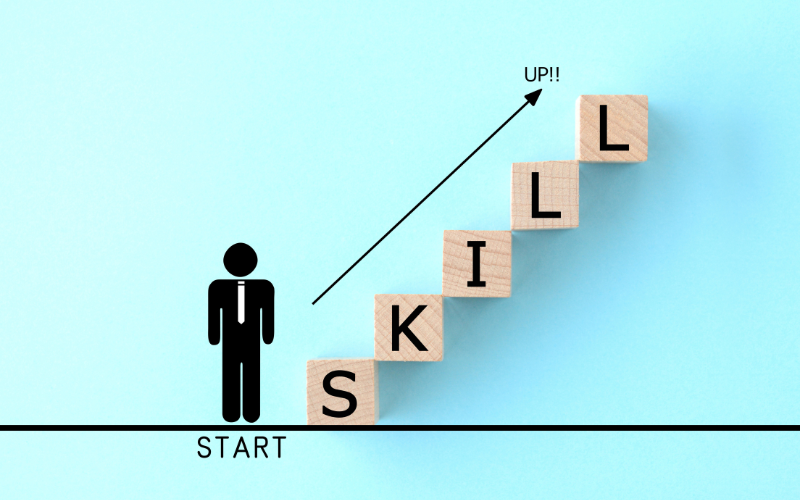As the world evolves at an unprecedented pace, the skills gap—the disparity between the skills employers need and those possessed by job seekers—has emerged as a critical challenge across various industries. Bridging this gap is essential for fostering economic growth, enhancing workforce productivity, and ensuring that individuals are equipped for the jobs of the future. Addressing the skills gap not only benefits employers and economies but also empowers individuals to achieve their career aspirations and contribute to society.
Understanding the Skills Gap
Definition and Causes
The skills gap refers to the mismatch between the skills required by employers and the skills available in the labor market. Key factors contributing to this gap include:
- Technological Advancements: Rapid technological changes have created new job roles and transformed existing ones, leaving many workers unprepared for the demands of a digital economy.
- Educational Mismatches: Traditional education systems often fail to equip students with the practical skills and competencies needed in today’s workforce, resulting in a lack of alignment between education and industry needs.
- Globalization: As businesses expand globally, the demand for diverse skills, including cross-cultural communication and foreign language proficiency, increases, further widening the skills gap.
- Demographic Changes: Shifts in the workforce, such as an aging population and the retirement of experienced workers, create a need for skilled labor that may not be met by younger generations.
The Importance of Bridging the Skills Gap
- Economic Growth: Addressing the skills gap is vital for driving economic development. A skilled workforce enhances productivity, innovation, and competitiveness, contributing to overall economic prosperity.
- Employment Opportunities: Bridging the skills gap increases employability for individuals, providing them with the necessary qualifications to secure jobs in high-demand industries.
- Social Equity: Ensuring that all individuals have access to skill development opportunities promotes social equity and helps reduce income disparities.
- Workforce Resilience: A well-skilled workforce is more adaptable to changes in the labor market, ensuring that workers can transition into new roles as industries evolve.
Strategies for Bridging the Skills Gap
1. Enhancing Education and Training Programs
- Curriculum Reform: Educational institutions should revise their curricula to include practical skills, critical thinking, and problem-solving to better align with industry needs.
- Vocational and Technical Training: Expanding vocational training programs can provide individuals with hands-on skills that are directly applicable in the workforce.
2. Promoting Lifelong Learning
- Continuous Education: Encouraging a culture of lifelong learning empowers individuals to pursue additional training and education throughout their careers, enabling them to adapt to evolving job requirements.
- Online Learning Platforms: Utilizing online platforms for skill development offers flexibility and accessibility, allowing learners to acquire new skills at their own pace.
3. Collaboration between Industries and Educational Institutions
- Public-Private Partnerships: Collaborations between businesses and educational institutions can lead to the development of training programs that address specific skill needs in the workforce.
- Internships and Apprenticeships: Providing students with opportunities for real-world experience through internships and apprenticeships helps them gain practical skills and enhances their employability.
4. Fostering Soft Skills Development
- Workshops and Training: Offering workshops on soft skills such as communication, teamwork, and leadership can enhance employability and workplace effectiveness.
- Mentorship Programs: Connecting individuals with mentors can provide guidance, support, and skill development in both technical and soft skills.
5. Utilizing Technology for Skill Development
- Simulation and Virtual Reality: Implementing simulation and virtual reality technologies in training programs can create immersive learning experiences that enhance skill acquisition.
- Data Analytics: Using data analytics to identify skill gaps in the workforce can help organizations tailor training programs to meet specific needs.
6. Government Support and Policy Initiatives
- Funding for Training Programs: Governments can invest in training programs that target high-demand skills, particularly in emerging industries.
- Incentives for Businesses: Providing tax incentives or subsidies for companies that invest in employee training and development can encourage workforce upskilling.
Conclusion
Bridging the skills gap is essential for creating a prosperous and sustainable future. By enhancing education and training programs, promoting lifelong learning, fostering collaboration between industries and educational institutions, and utilizing technology, we can equip individuals with the skills needed to thrive in an ever-changing labor market. A skilled workforce not only drives economic growth but also empowers individuals to reach their full potential, contributing to a more equitable and resilient society. Through collective efforts from governments, businesses, educational institutions, and individuals, we can build a future where everyone has the opportunity to succeed and flourish.


Be First to Comment